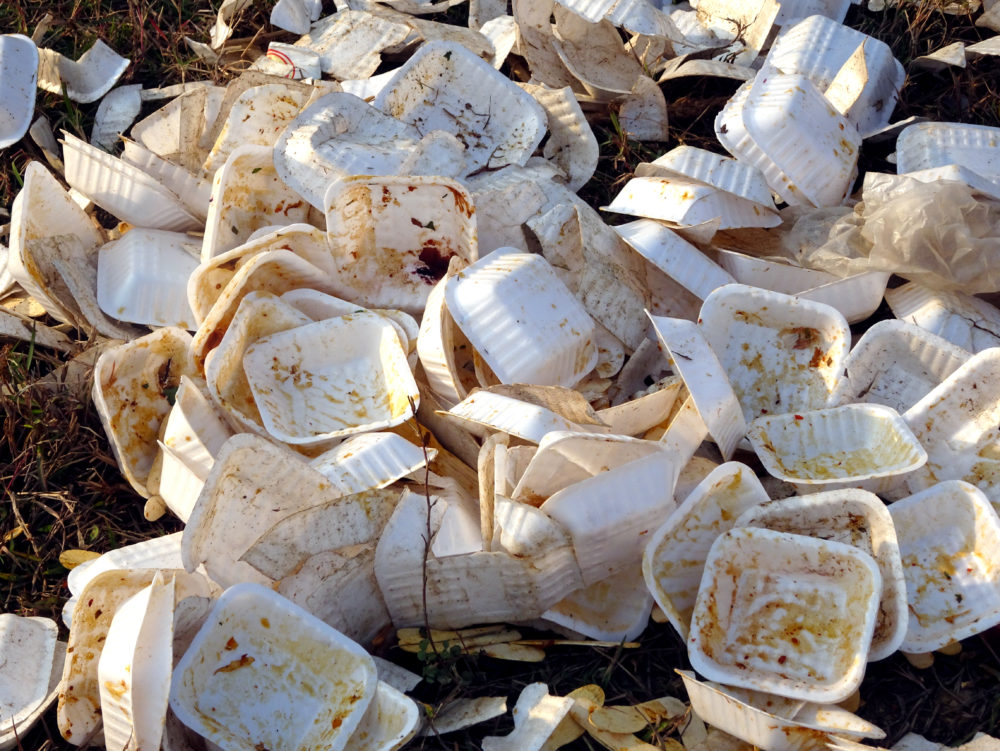Microplastics and Polystyrene Pollution May Contribute To Antibiotic Resistance: Study
Many microplastics also contain and release PFAS chemicals, which have been linked to numerous adverse health effects.

Plastics from polystyrene containers, such as Styrofoam and those used for take-out food, may be contributing to the proliferation of antibiotic resistance and the emergency of new “superbug” infections that are difficult to treat, according to the findings of a new study.
In findings published late last month in the Journal of Hazardous Materials, researchers from Rice University indicate that impact of microplastics breaking down may be causing bacteria to grow and spread that is resistant to available antibiotics, posing serious health risks for humans.
Researchers focused on how ultraviolet aging affected microplastics, such as polystyrene used in many disposable containers, in the environment. These discarded polystyrene items break down into microplastics and allow microbes and chemical contaminants to invade their surfaces. These microplastic surface serve as breeding grounds for antibiotic-resistant genes (ARG), allowing them to grow and spread, the researchers discovered.
These genes are protected by bacterial chromosomes, phages and plasmids which can help spread antibiotic resistance to other items in the environment and people. When spread to humans, it reduces their ability to fight infections and contributes to the population’s growing resistance to antibiotics, leading to “superbug” infections that are difficult to treat and may result in high fatality rates.
Furthermore, chemicals leach from the plastics as they age, primarily due to breakdown from exposure to UV rays, but other factors as well. This also increases the likelihood of resistance.

Do You Know About...
Childhood Diabetes Lawsuits Against Junk Food Industry
Lawyers are now pursuing financial compensation for families of children diagnosed with Type II diabetes, fatty liver disease and other chronic illnesses caused by addictive and harmful substances in ultra-processed foods.
Learn MoreResearch published in 2018 found that microplastics were found in the feces of people from eight countries around the world. Now, researchers believe microplastics can be found in the body of every human. On average, each person is believed to have 20 particles of microplastics in every 3.5 ounces of stool.
The majority of particles found in human waste are from food packaging made from polyethylene terephthalate, polystyrene, and polyethylene, which can contain 20 different per- and polyfluoroalkyl substances (PFAS).
PFAS were first introduced into the manufacturing industry in the 1940’s, because of their ability to resist heat, grease, stains, and water. However, since then the chemicals have been linked to a myriad of adverse health effects including liver damage, thyroid disease, decreased fertility, high cholesterol, obesity, hormone suppression, and cancer.
These chemicals have widespread side effects on the human body, ranging from disrupting the endocrine system, affecting fertility, increasing the likelihood of low IQ among infants exposed during pregnancy, and low testosterone levels in men.
The U.S. Environmental Protection Agency recently put in place new reporting requirements for manufacturers of PFAS compounds, in order to get a better understanding of their potential adverse health effects.
“We were surprised to discover that microplastic aging enhances horizontal ARG,” Pedro Alvarez, lead researcher and a Professor of Civil and Environmental Engineering, said in a press release. “Enhanced dissemination of antibiotic resistance is an overlooked potential impact of microplastics pollution.”





0 Comments